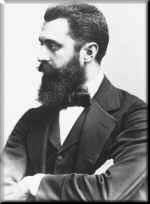
This article (from the New York Times two years ago) describes how New York's Sephardic population celebrates Sukkot. The "Related" box on the left of the screen (when you go to the article at the NY Times website) features recipes for dishes mentioned in the article.
At the Festival of Sukkot, Cooking Is Identity for Syrian Jews - New York Times Cooking Defines Sephardic Jews at Sukkot
LIKE its trees, Brooklyn’s sukkahs sprout in unlikely places.
All over the borough, observant Jewish families spent the first week of October building sukkahs, outdoor rooms with open roofs, in preparation for the holiday of Sukkot, which began last Friday and ends this Friday. Perched on asphalt roofs and in concrete gardens, they will eat under the stars for a week to commemorate the Jews’ biblical wanderings in the desert.
For one food-loving community within Brooklyn’s sizable Jewish population, Sukkot has additional significance.
“We always cook a lot, but for Sukkot, we do even more,” said Aida Hasson, who grew up in Beirut and is part of Brooklyn’s tight-knit community of Middle Eastern Jews.
This network of a few hundred families shares roots in Syria, Lebanon, Iraq and Egypt, and also an extraordinary culinary tradition. They use the term Syrian Jews, to distinguish themselves within the larger world of the Sephardim, the Jews of the Mediterranean.
“We call ourselves Syrian, Sephardic, Middle Eastern, whatever,” said Giselle Habert, who was born in Cairo. “The important thing is that we all know each other, and we all cook the same things.”
This community’s favorites are labor-intensive dishes that are still passed down from mother to daughter: sambusak, crisp little half-moons stuffed with allspice-scented meat or tangy white cheese; mujadara, lentils and rice cooked together and thickly piled with gold-brown strands of onion; mahshi, vegetables like tiny eggplant and finger-size zucchini stuffed with spiced meat and rice; and kahk, sesame-sprinkled rounds of crumbly pastry.
“Ours is the real, original cooking of the Jews,” said Vicki Maijor, whose grandmother was born in Aleppo, Syria. In the Bible, she pointed out, when Esau sells his birthright, “it is for lentil soup, isn’t it?”
Now spread over the world, “the community,” as its members call it, is defined mostly through family and religion, but also by its distinctive food, so different from the brisket and bagels of the Ashkenazic tradition most Americans are familiar with.
FOR MORE OF THIS ARTICLE, CLICK HERE.
About the image above:
Evan Sung for The New York Times
A dessert table includes, from top, sesame rounds called kahk; preserved apples and spaghetti squash; and cactus pear and pomegranate seeds, fall fruits that are traditional for Sukkot.


